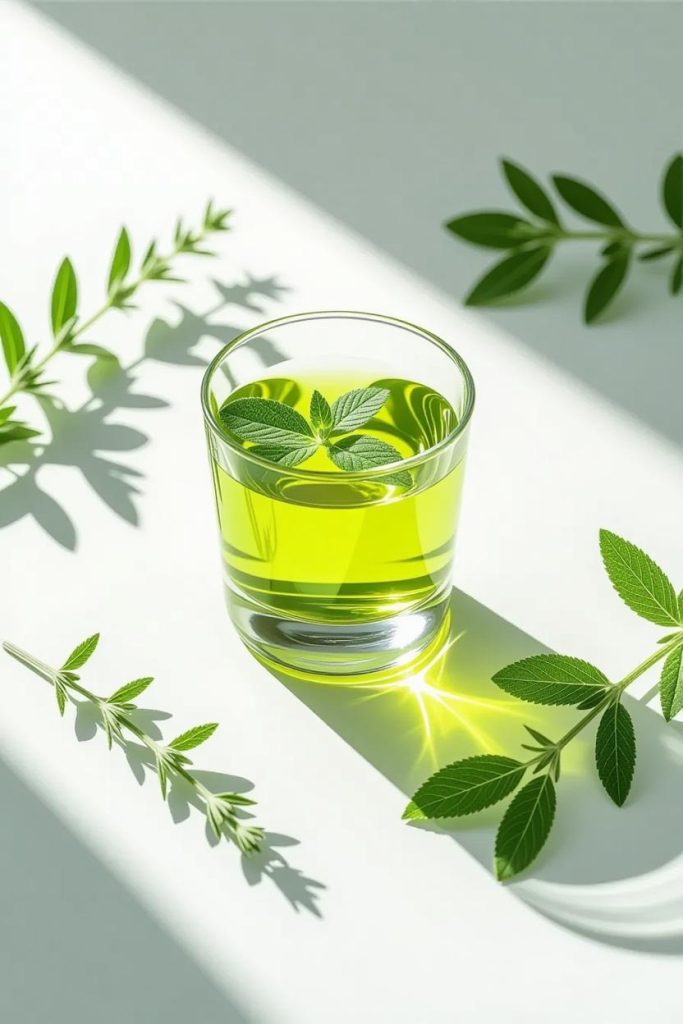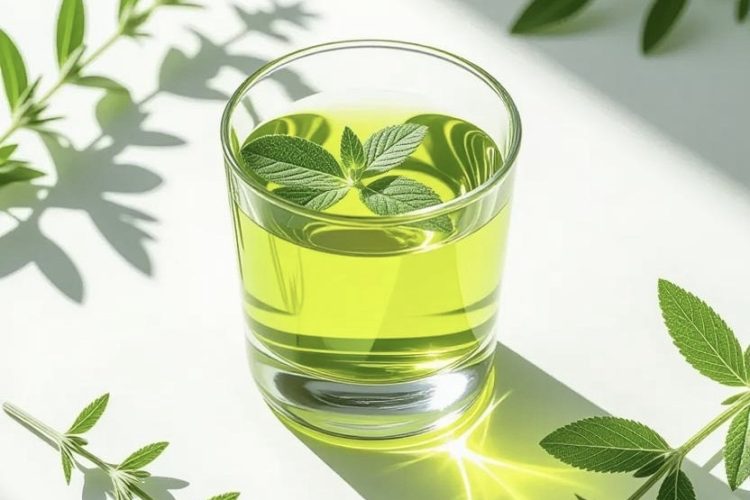Thujone, a ketone and monoterpene, exists as α-thujone and β-thujone, found in wormwood, sage, and arborvitae, notably in absinthe. It acts as a GABAA receptor antagonist, potentially causing convulsions at high doses, though modern research downplays its psychedelic effects in absinthe, attributing them to alcohol. With a molecular formula of C₁₀H₁₆O, thujone has a molar mass of 152.237 g/mol and low water solubility. It’s biosynthesized from geranyl diphosphate via the methylerythritol phosphate pathway. Regulations in the EU, US, and Canada limit its use in food and drinks due to neurotoxicity. Thujone is quantified using gas chromatography–mass spectrometry and serves as a flavoring agent and in herbal medicine, despite risks. Historically linked to absinthe bans, its levels in the spirit were low (0.5–48.3 mg/L).
Long Version
Thujone
Introduction
Thujone is a chemical compound classified as a ketone and a monoterpene, primarily existing in two diastereomeric forms: α-thujone and β-thujone, which are epimeric at the C4 position. This volatile compound is found in various plants and essential oils, most famously associated with absinthe, the spirit derived from wormwood (Artemisia absinthium). Historically blamed for the purported psychedelic effects and convulsant properties of absinthe, modern research indicates thujone’s presence in trace amounts and questions its role in such effects. As a botanical component, thujone acts on the GABAA receptor as an antagonist, contributing to its pharmacology, including neurotoxic and convulsant potential at high doses. It is also utilized in herbal medicinal applications and as a flavoring agent in food and beverages, subject to strict regulations in regions like the European Union, United States, and Canada.
Chemical Properties
Thujone has the molecular formula C₁₀H₁₆O and a molar mass of 152.237 g·mol⁻¹. The IUPAC name for α-thujone is (1S,4R,5R)-4-Methyl-1-(propan-2-yl)bicyclo[3.1.0]hexan-3-one, while for β-thujone it is (1S,4S,5R)-4-methyl-1-propan-2-ylbicyclo[3.1.0]hexan-3-one. Its InChI is InChI=1S/C10H16O/c1-6(2)10-4-8(10)7(3)9(11)5-10/h6-8H,4-5H2,1-3H3/t7-,8-,10+/m1/s1, with slight variations for stereoisomers. Density measures 0.92 g/cm³ for β-thujone and 0.9116 g/cm³ for α-thujone, with a boiling point of 203 °C (397 °F; 476 K) for the alpha-beta mixture. Solubility in water is 407 mg/L. Under GHS labelling, thujone is classified as a warning substance, marked as harmful if swallowed, with precautions to wash hands thoroughly after handling, avoid eating or drinking during use, rinse mouth if swallowed, and dispose of contents appropriately.
Isomers
Thujone predominantly occurs in two diastereomeric forms: (−)-α-thujone and (+)-β-thujone, which are epimeric. These forms differ in configuration at the carbon bearing the methyl group. Additionally, (+)-α-thujone and (−)-β-thujone exist and were identified in nature in 2016 within common sage (Salvia officinalis). The α and β isomers exhibit varying biological activities, with α-thujone generally showing higher potency as a convulsant.
Natural Occurrence
Thujone is a volatile compound present in the essential oils of numerous plants. It is notably found in wormwood (Artemisia absinthium), the primary source for absinthe production, as well as arborvitae (genus Thuja, from which the name derives), Nootka cypress, some junipers, mugwort, oregano, common sage (Salvia officinalis, where sage oil can contain over 20% thujone from α and β forms), tansy, and various Mentha species. Typically, it appears as a mixture of isomers in a 1:2 ratio of α to β. These botanical sources contribute to thujone’s role in herbal medicinal products and perfumery.
Biosynthesis
The biosynthesis of thujone in plants follows pathways typical of monoterpenes, originating from the methylerythritol phosphate pathway (MEP) for isoprene unit formation. It begins with geranyl diphosphate (GPP) synthesized from dimethylallyl pyrophosphate (DMAPP) and isopentenyl diphosphate (IPP) via geranyl diphosphate synthase. Sabinene synthase converts GPP to sabinene through isomerization to linalyl diphosphate (LPP) and neryl diphosphate (NPP), forming an allylic cation that cyclizes to the α-terpinyl cation. A 1,2 hydride shift occurs via Wagner–Meerwein rearrangement, yielding the terpinen-4-yl cation, which further cyclizes to the thujyl cation before deprotonation to (+)-sabinene. From sabinene, oxidation by a cytochrome P450 enzyme produces (+)-sabinol isomers (trans or cis, varying by plant), followed by dehydrogenase conversion to (+)-sabinone, and finally reductase mediation to α-thujone and β-thujone.
Pharmacology and Toxicology
As a ketone and monoterpene, thujone functions as a GABAA receptor antagonist, specifically a competitive GABA antagonist, inhibiting neuronal inhibition and potentially leading to muscle spasms, convulsions, and seizures. It also acts as a 5-HT3 antagonist. The median lethal dose (LD50) for α-thujone in mice is approximately 45 mg/kg, with convulsions occurring from 30 mg/kg and full lethality at 60 mg/kg, effects mitigated by GABA modulators like diazepam or ethanol. Thujone is neurotoxic, affecting brain, kidney, and liver cells, and has been linked to anxiety, sleeplessness, and epileptic activity. Historical associations with psychedelic effects in absinthe stem from 19th-century observations, but modern studies downplay this, attributing absinthe’s impacts more to alcohol content. A 1970s hypothesis compared thujone’s shape to THC, but it shows no cannabinoid activity. Low doses may elevate mood, while high doses impair attention and cause toxicity.
History and Cultural Significance
Thujone gained notoriety in the mid-19th century through absinthe, a spirit popularized in Europe but banned in many countries by the early 20th century due to alleged hallucinogenic and convulsant effects. French physician Valentin Magnan isolated thujone from wormwood oil, linking it to seizures in animal studies and human “absinthism,” though his conclusions were influenced by biases against alcohol. Bans lifted in the late 20th century after analyses showed low thujone levels in historical absinthes (0.5–48.3 mg/L). Culturally, thujone features in herbal medicinal traditions, such as arborvitae for immune stimulation, despite risks. Its role in flavoring agents persists in controlled amounts.
Regulations
Regulations on thujone vary by region to mitigate its neurotoxic risks. In the European Union, maximum levels are 0.5 mg/kg in foods prepared with Artemisia species (excluding sage and non-alcoholic beverages), 10 mg/kg in alcoholic beverages not from Artemisia, 25 mg/kg in sage-prepared foods, and 35 mg/kg in Artemisia-based alcoholic beverages. In the United States, pure thujone addition to foods is prohibited; products with Artemisia, white cedar, oakmoss, tansy, or yarrow must be thujone-free (under 10 ppm), though sage oil (up to 50% thujone) is generally recognized as safe. Absinthe must comply, allowing imports with minimal thujone. In Canada, provincial laws apply: Alberta, Ontario, Nova Scotia, and British Columbia permit 10 mg/kg; Quebec 15 mg/kg; Manitoba 6–8 mg/L, with flexibility for imports in Saskatchewan and Quebec.
Analysis
Thujone quantification in essential oils and products relies on gas chromatography–mass spectrometry (GC-MS), essential for accurate measurement due to potential interferences in gas chromatography alone. Studies using GC-MS have detected thujone in absinthes at low levels and in sage oils at 31.2–52.8% α-thujone, aiding regulatory compliance and research.
Uses
Beyond its pharmacological scrutiny, thujone serves as a flavoring agent in foods and beverages, contributing to the aromatic profiles of sage, wormwood, and other herbs. It appears in perfumery and herbal medicinal formulations for purported immune benefits, though usage is tightly regulated to avoid toxicity.

Hashtags For Social Media
#thujone #absinthe #wormwood #sage #herbalmedicine #naturalcompounds #botanicalscience #essentialoils #plantbased #chemistrylovers #greenelixir #absintheart #scientificfacts #naturechemistry #mindandbody #neuroscience #naturalremedies #herbalpower #herbology #botanicals #alchemyvibes #absinthelovers #scienceandnature #molecularbeauty #plantresearch #absintheaesthetic #labdiscoveries #phytochemistry #toxicology #greenspirit
Related Questions, Words, Phrases
what is thujone | what does thujone do | is thujone toxic | how much thujone is in absinthe | does absinthe contain thujone | where is thujone found | is thujone safe | what plants contain thujone | how does thujone affect the brain | does thujone cause hallucinations | why was absinthe banned | what are the effects of thujone | how is thujone measured | how does thujone work | what foods have thujone | what is thujone used for | is thujone natural | how is thujone made | what is the chemical formula of thujone | what is thujone in wormwood | what does thujone taste like | how much thujone is safe | is thujone legal in the us | does thujone cause seizures | can you overdose on thujone | what is the difference between alpha and beta thujone | what is the molecular weight of thujone | how is thujone biosynthesized | what is thujone in sage | how does thujone interact with gaba receptors | what are the health risks of thujone | how is thujone analyzed in labs | why is thujone regulated | what does thujone smell like | how much thujone is in wormwood






